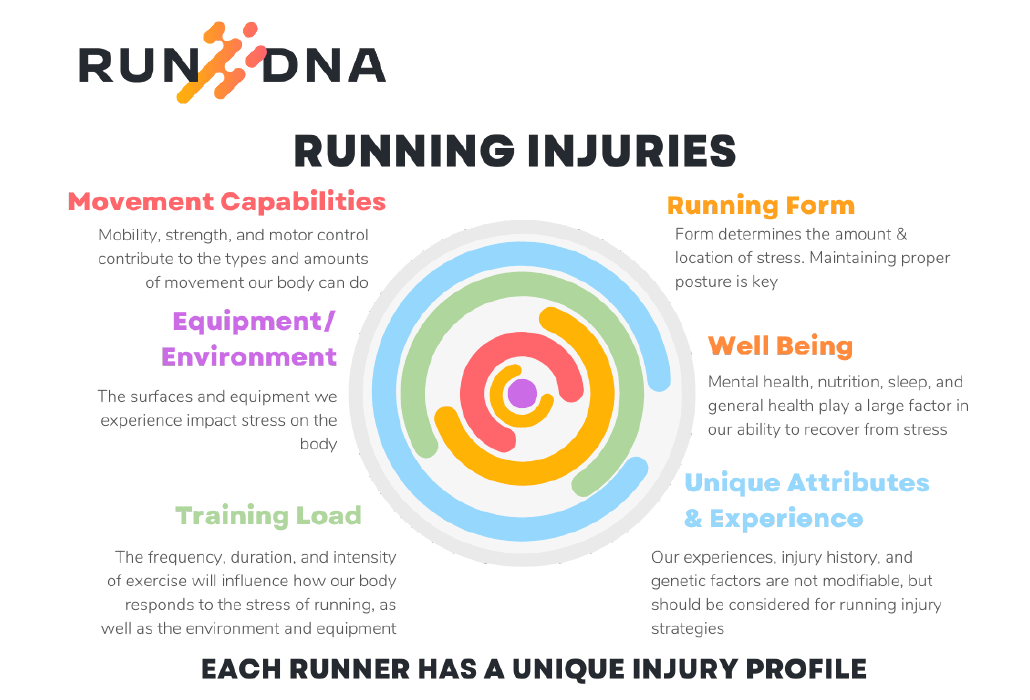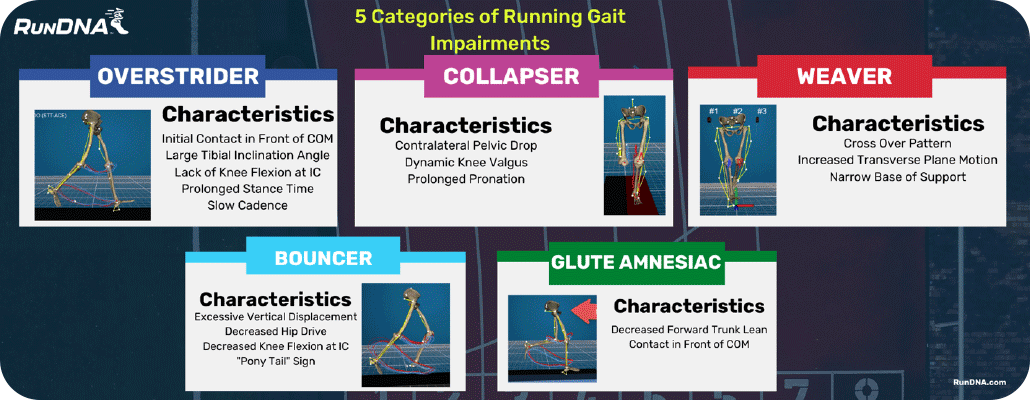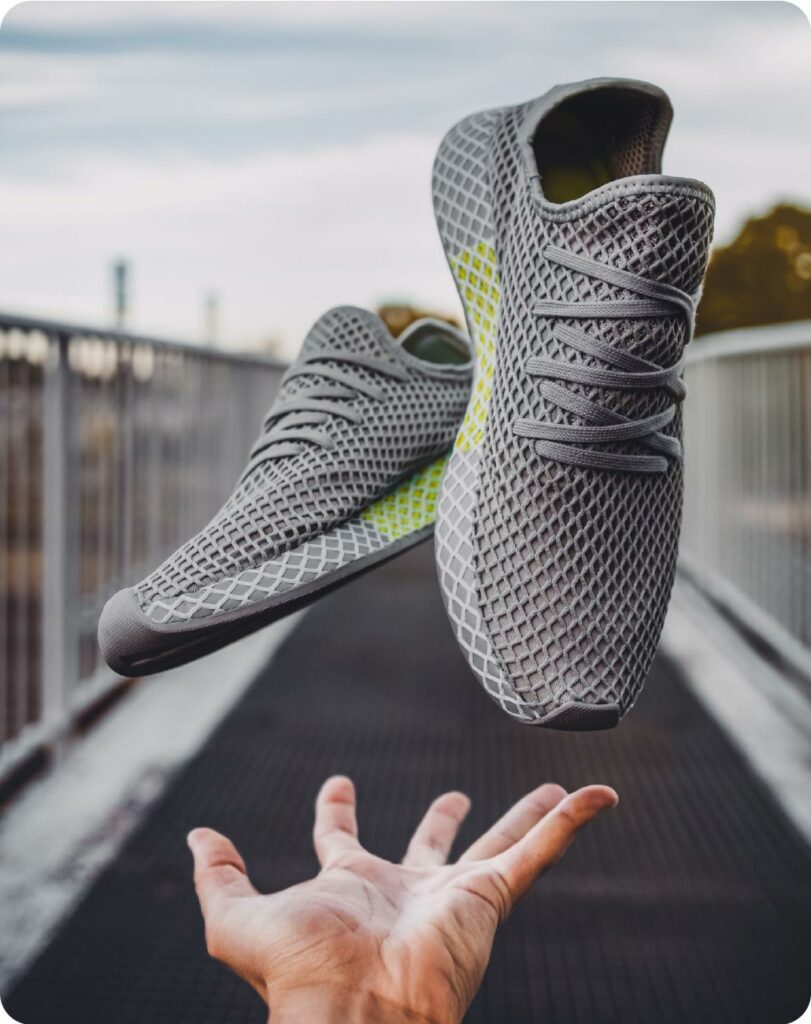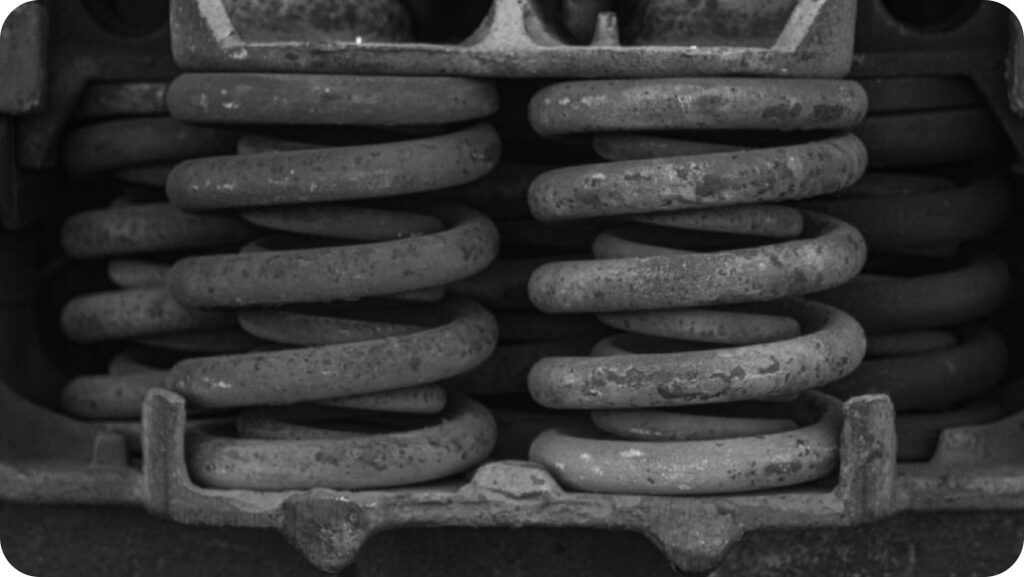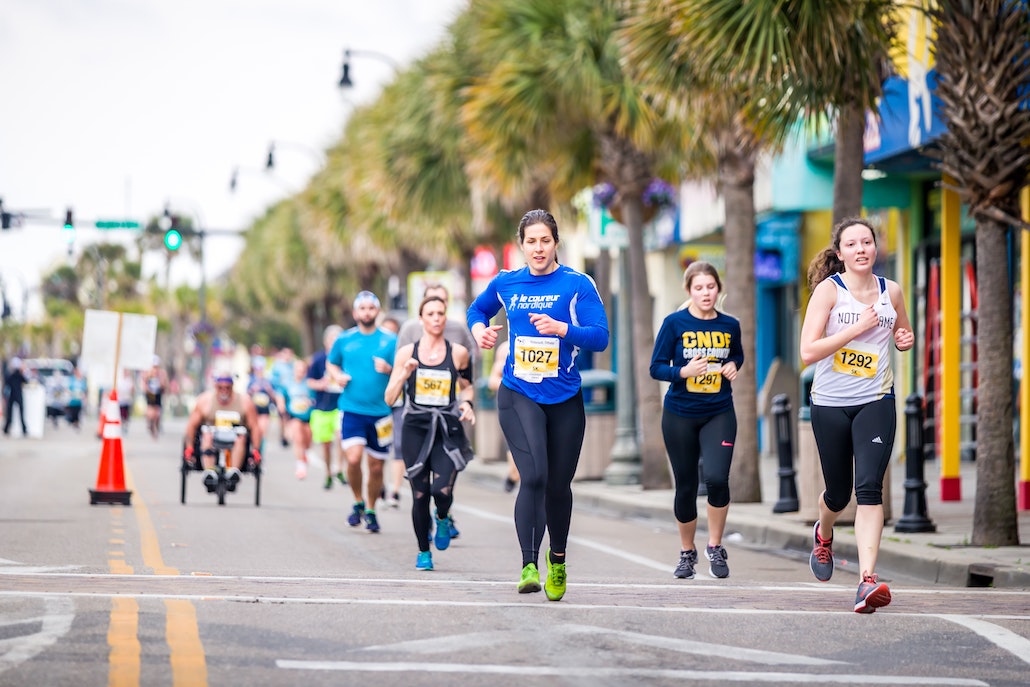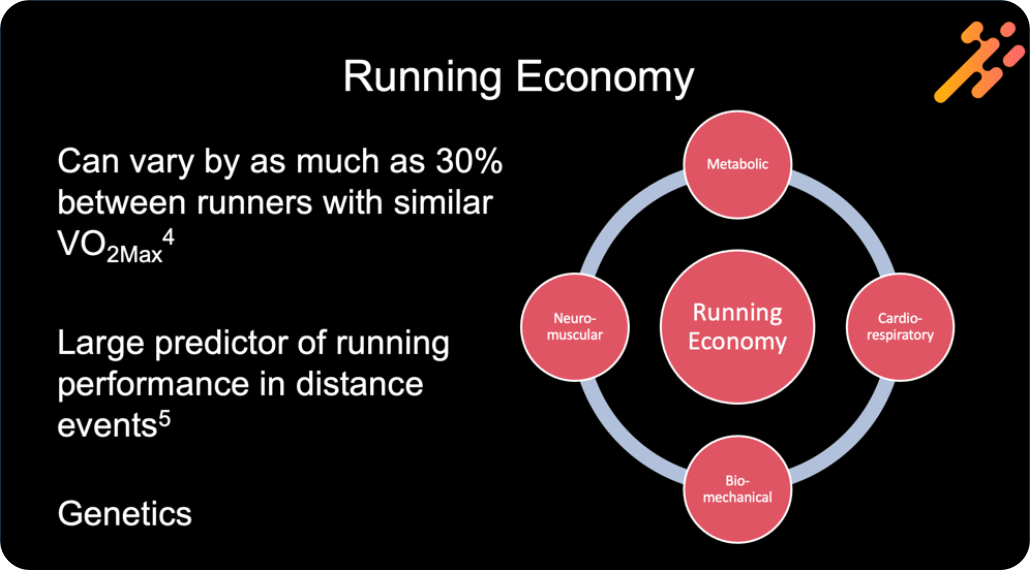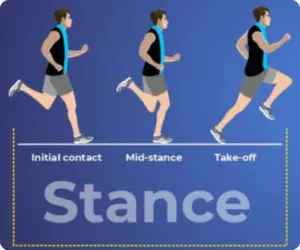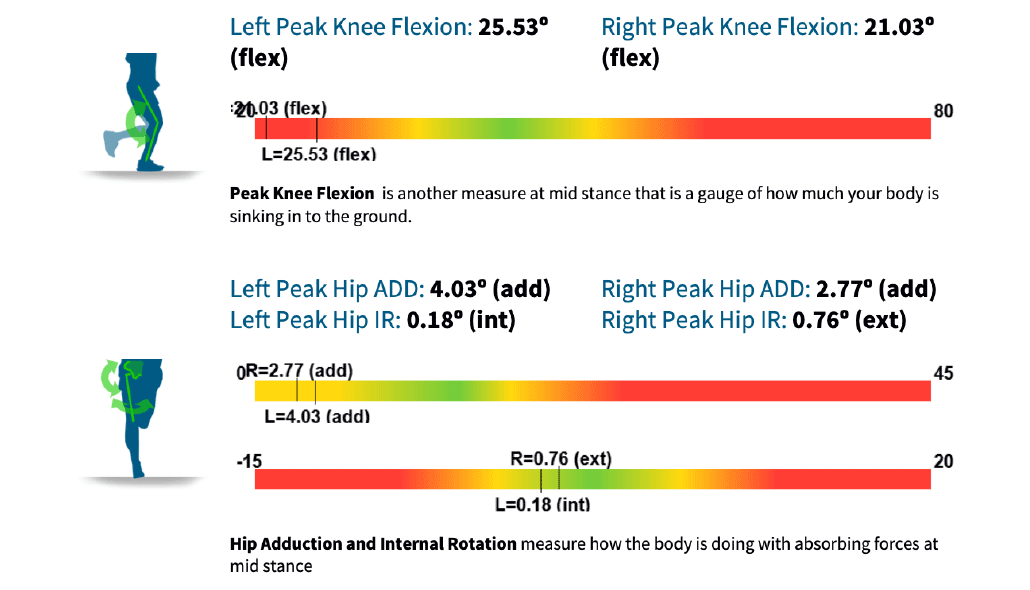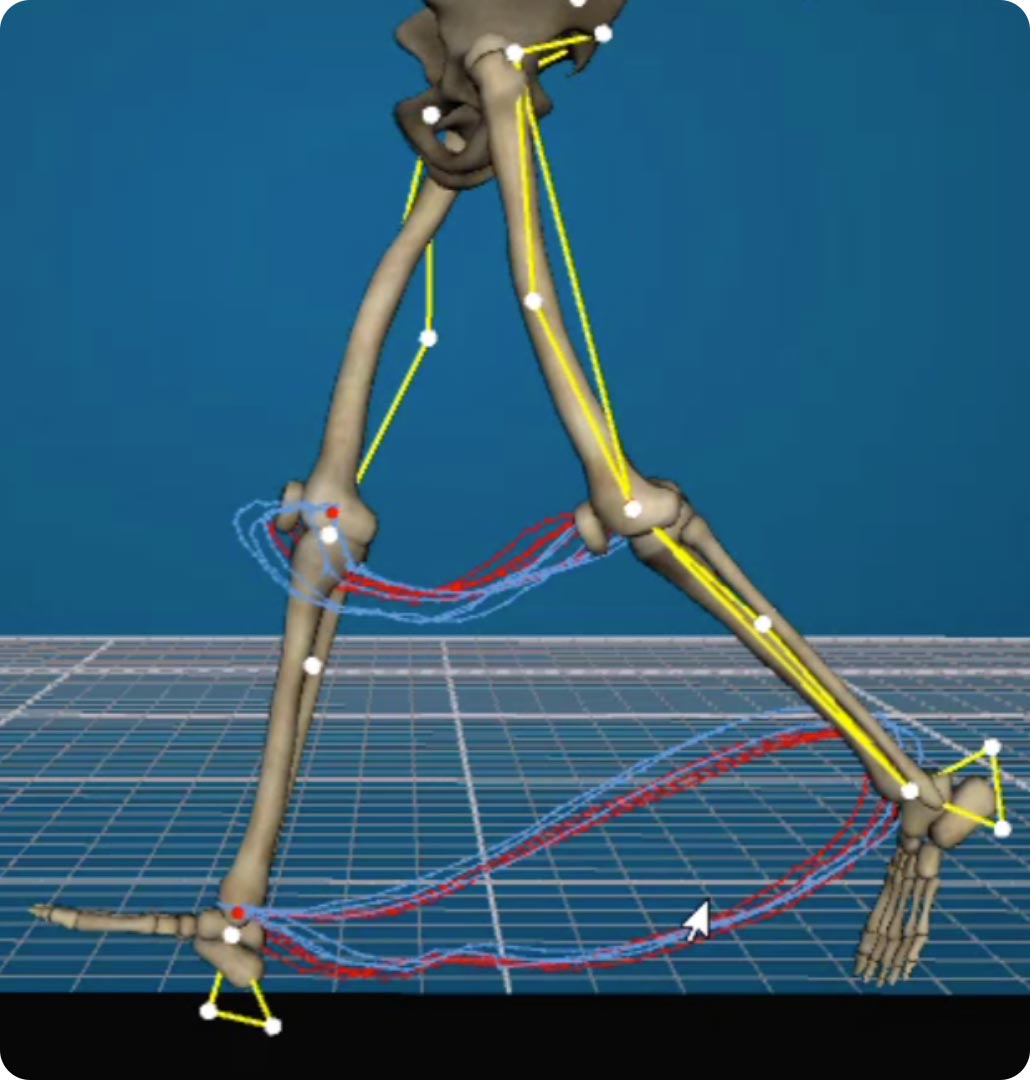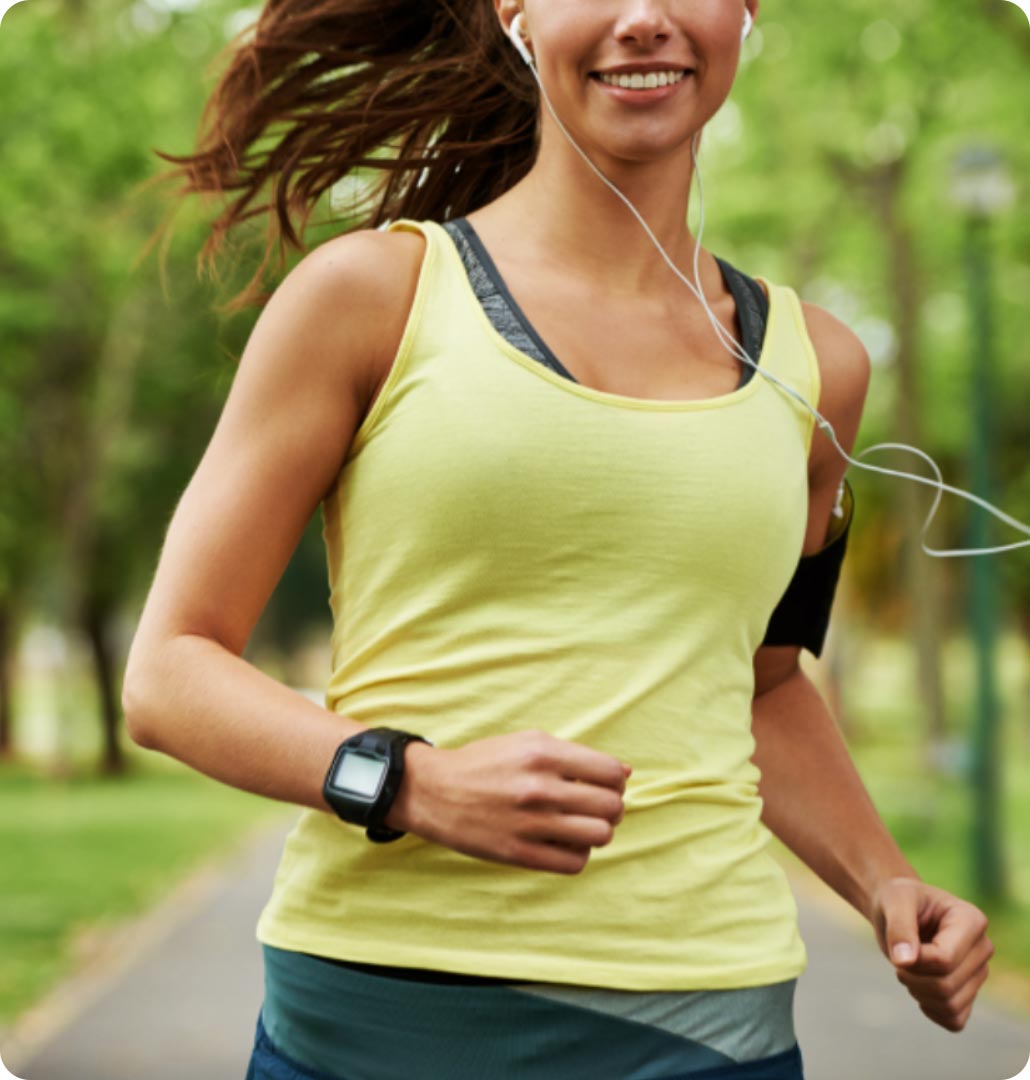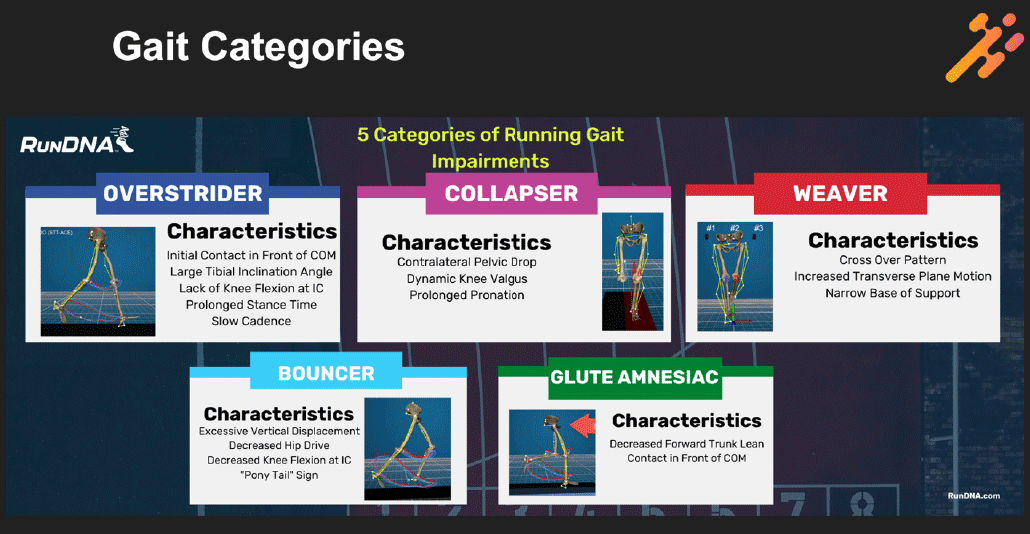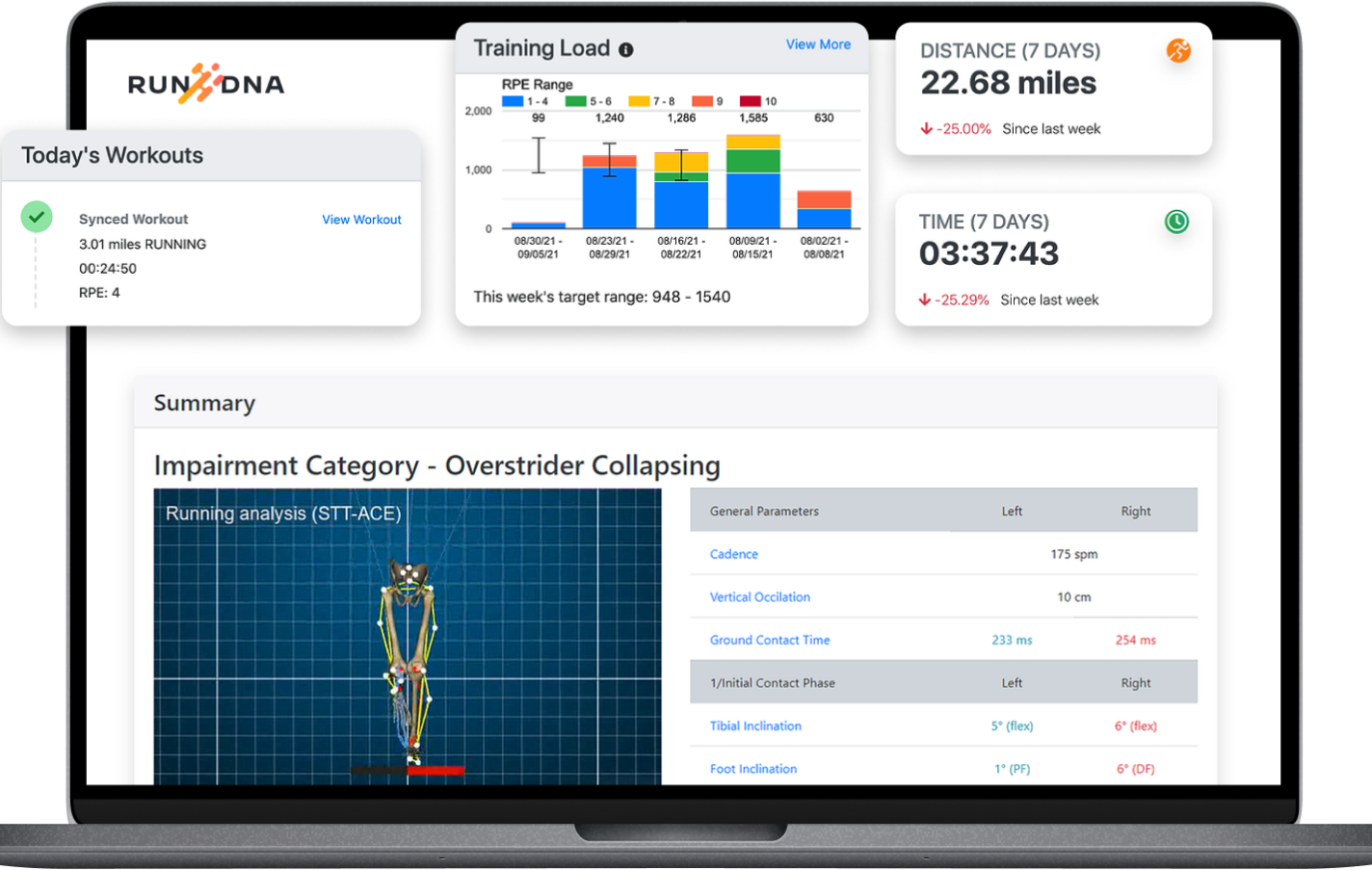A complete guide on how to start running so you can get all the benefits of running while avoiding injuries.
One of the best things about running is that the health and wellness benefits are almost unlimited. One of the worst things about running is that almost 80% of people get injured every year. No matter what you are looking to get out of running, we want to help you get all of the benefits and stay healthy.
Running can be as simple as putting your pair of running shoes on and heading out the door, but there are some key lessons and tips that will help you avoid overuse injuries commonly seen in runners. Below we will share some of our favorite lessons and our guide to getting started running.
3 Key lesson every runner should know
A few good rules all new runners should understand before you start running.
1. stress + rest = best:
Most runners understand this concept when explained, but their run training doesn’t always show it. One thing I commonly tell runners is that you don’t get faster during a run. You only get faster between runs when your body adapts to the training. Especially when you are starting a running routine, allowing your body enough time to rest between runs can help you to build cardiovascular fitness and avoid running injury. The technical term for this is the Supercompensation Model. When you start running you have a baseline fitness. Right after a run, your body loses fitness from the stress of the run before it recovers and actually improves fitness. If you allow for enough recovery, you can time workouts right so that your next run is at the peak of supercompensation so that fitness continues to improve. This is my nerdy way of saying that the rest and recovery between runs is the most important part of any workout routine.
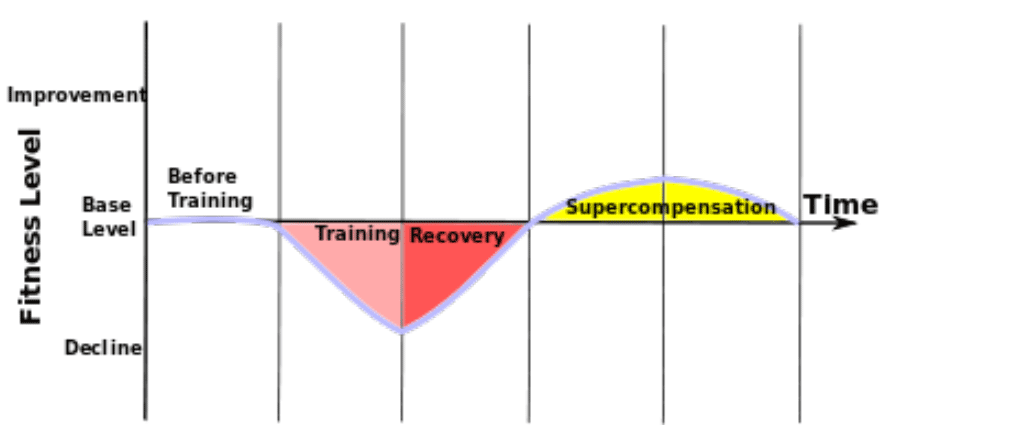
2. Athletes that run:
Most people have a picture in their head of what a runner’s body looks like. To get the most out of running, we need to break that stereotype and become Athletes that run. This means that more running is not the only way to get faster at running. Runners should incorporate strength training, flexibility, running form drills, cross training, and mental training for a holistic approach to getting great results with running. The best time to begin incorporating things like strength training are when you first start running. Even doing 5-10 min of strength training a few times a week will make you a more efficient runner. (If you don’t know where to start, check out the plan builder from RunDNA that will build you a custom strength plan based on your movement, goals, and equipment).
3. A goal without a plan is just a wish:
Even if you only want to run a few days a week with no running event in mind, a plan is essential to prevent running injuries and get the most benefit from running. The first thing a training plan will do is help you ramp up to your desired weekly running schedule with injury prevention in mind. Running injuries have a 4-6 week delay, and ramping up weekly mileage appropriately is key. Once you are at your weekly mileage, you need variety in your exercise to keep your body adapting. Polarized training is a method that encourages you to do different types of runs to train your various energy systems and body structures. At a basic level, polarized training focuses on running fast when you are supposed to and running slow when you are supposed to. Based on what you are training for, roughly 80% of weekly mileage should be slow running and 20% should be faster. The slow running should be at a conversational pace, which I tell my runners that they should be able to recite the pledge of allegiance without gasping to make sure they are running slow enough. Running slow enough allows key adaptations to improve aerobic fitness. If you run too fast for your slow runs it will not be fast enough to improve your speed, won’t be slow enough to improve aerobic fitness, but will be just right to get you injured!
Defining your runs
Now that we have a few key lessons covered, let’s talk about how to start a running program. No two runs are created equal. Even if you run the same route on different days there will be internal and external factors that affect the energy needed to complete a run. If you sleep less (internal factor) the night before a run, or if the wind is stronger (external factor), this will impact the run. For this reason, we need to move beyond weekly mileage and training paces that many other runners use.
At RunDNA we use a method called session RPE to define how hard a run is, or collectively what we call training load. It turns out that our brain is very good at interpreting all of the internal and external factors that affect how hard a run is. By “rating perceived effort” (AKA RPE, see scale below) and using the duration of the run we can assign a score for each run.
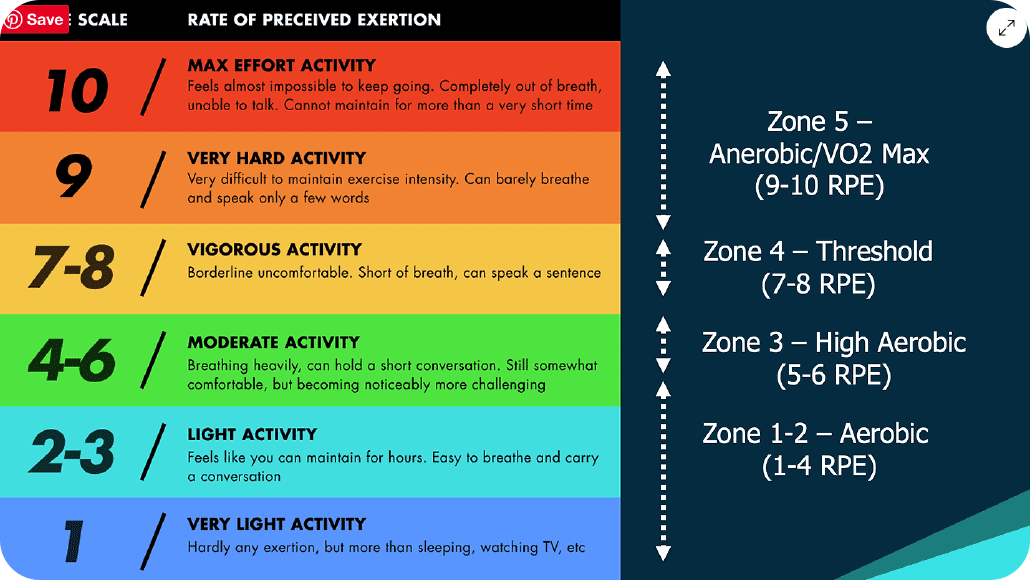
The benefit of giving a score to each run is that we can track progression over time. Research from running and other sports uses session RPE to track Acute to Chronic Workload Ratios. If you have heard about the 10% rule in the past for progressing runs, forget about it! If you progressed 10% a week for 12 weeks you would be doing 2.5x as much as when you started. Acute to Chronic Workload Ratios (ACWR) give an idea of what you have acutely done (~past 7 days) compared to what your body is chronically used to ( past 4 weeks). There is a sweet spot for ACWR to be between 80%-130% to avoid injuries.

We use ACWR is to help prescribe training, but also for the runner to know how much they should listen. If the ratio is high (130% or above) and a runner is having some aches or pains, then the runner may want to modify intensity or duration of that workout. These numbers are not absolute values to say that if you get over 130% that you need to rest, but a gentle nudge to help you decide what is best for staying healthy/consistent while running. The RunDNA App will track this number for you and display it on your dashboard so that you and your coach can see it.

Running equipment
Last thing before we get started talking about a specific plan to get started running…gear! Running can be a very simple sport, lace up your running shoes and get going. I want to share some quick tips on picking running shoes and other gear that may help.
Running shoes
I have three general rules when it comes to picking a good pair of running shoes.
- They must be comfortable – Every foot is unique, first and foremost find one that feels good. Shoes change from year to year and so does our body, so make sure you head to a local running specialty store and get a proper fit
- Light-weight is better – While some shoes may feel very comfortable, remember that you have to drag that thing around for miles. A lighter weight shoe will save you energy
- The shoe should not force you to run a specific way – If you feel like a shoe forces you to run differently than normal (some even advertise they do!) then I would be cautious of these shoes. If you are actively working to change your running form and addressing flexibility and strength to do so, then give it a shot. Otherwise, keep it simple.
We could say a lot more about choosing a running shoe, but start simple if you are new to running.
Clothing
Depending on the time of year and geography of where you live, this will vary for each person. If you want a low cost way to start running, find wicking shorts, shirt, sports bra, etc that are designed for running. As you get more involved in running, start to upgrade your clothing so that you have some nice gear for at least your longer distances. Socks are one thing that I definitely recommend you do not take the cheap route on. You only need 2-3 pairs, so head to the local running specialty store and try on nice socks!
Nutrition
Good ol’ fashioned water and non-processed foods go a long way for nutrition. Once you start to run 40+ mins you may want to consider a sports drink and something to fuel on the run. If you plan to use nutrition during race day, make sure you try it out on your runs ahead of time. *Insider tip* most runners try out nutrition on their long runs and forget to try it out on faster runs that simulate race pace. Make sure to try it running at race pace because you may find that chew or gel don’t go down as easy when your heart is beating fast!
Exercise equipment
You can go very low budget to start here with a simple tennis ball for some mobility work and a resistance bad for some activation work. Based on your budget, we have a great blog to build you home gym for every budget. If you are looking for a great gift idea for you, ask for a percussive massager (theragun).
Beginner’s guide to running
If you are new to running or returning after a long break, it is worth taking the time to do it right. Running goals should be measured in months or year, not days or weeks. Below we are going to lay out a run walk method program that we suggest all new runners use. You can also head over to the plan builder on the RunDNA and get a program that we call “Run For Fitness”. The algorithm on the app will analyze how you move and suggest a plan designed to address your strength, flexibility, and running needs all in one place.
Program overview
This plan involves running 2-3 days/week and starts with 7 sets of 2 minutes of running with 1 min walk breaks between sets. The run walk method allows the musculoskeletal systems (bones and muscles) a chance to recover while keeping the heart rate elevate to build cardiovascular fitness. Rest days occur at least weekly and we encourage cross training for additional cardiovascular fitness.
The goal of the program is to build up to 30 min of consecutive running over a 4 week period. All runs in this phase should be done at a 4/10 effort level. We suggest doing dynamic stretches for 2-5 min before running.
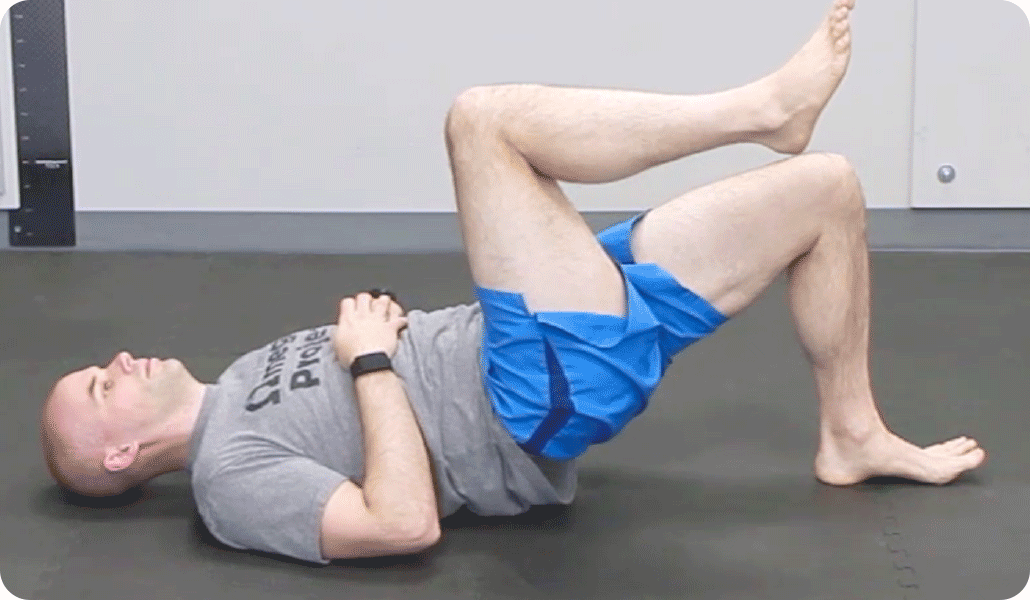
Proper running form will help to make you a more efficient runner. Getting your gait analyzed is a great way to learn drills and techniques specific to you. If you do not have a running coach or medical/fitness provider that can evaluate your form, below is one of our favorite drills. You can add these marching drills in prior to a run and it will only take 1-2 min. While running, you can think about driving the knee forward like you are kneeing a soccer ball as opposed to juggling a soccer ball. You can also check out our article about why you should get a gait analysis to learn more about this.
Adjusting the plan
Every plan starts with good intentions, but life happens and you miss a day of running. Don’t worry! Because this plan is divided into levels, if you don’t run for 7 or more less in a row start back with the level you were at on the last day you ran. If it is 14 days or more since your last run, consider dropping down a level.
If you need to adjust the plan because it is too hard or too easy, we suggest using the soreness rules.
- Soreness during warm-up that continues – take two days off and drop down one level
- Soreness during warm-up that goes away – continue as planned
- Soreness during warm-up that goes away but comes back as session continues – take two days off and drop down one level
- Soreness the day after – take one day off and stay at the same level
- No soreness – continue as planned
If you are using the RunDNA App Plan Builder, you can also use the Level Up and Level Down feature. At the bottom of the workout, simply select to level up or down and it will adjust all future workouts. You can even reschedule the whole program to start running on a different date.
The plan!
Check out the run walk plan below and the suggested guidelines. You can download this handout and print it out, or join the app to get it put onto a calendar for you with email reminders and explanations.
Make the most out of your running plan
Here are some suggestions that will help to make the start of your running journey more fun:
Coach
If you think you are really interested in learning more about running, you should look into a run coach or check in with experienced runners who can give you some running tips. Learn from others experience and avoid common mistakes.
Get social
Join a running club to help you stay motivated and keep you company on your runs. This may be a great way to learn about local events and find great running routes that are safe and fun. Many runners are more than willing to share their knowledge and love of the sport, especially with new runners!
Be kind to yourself
I will say this again, running goals should be measured in months and years. Don’t get down on yourself if you aren’t achieving what you want from running right away. Consistency is key! Whether you are looking to lose weight or just fit in a workout during your lunch break, running will help you achieve your goals if you give it time. Did you know that it can take up to 3 weeks for the benefits of a long run to kick in? Even if you can’t measure it with a stop watch or a scale, running is helping. Give it time and don’t get down on yourself if you don’t pick it up as quickly as you hoped. The illusive runner’s high is tough to find, but worth the journey.
Avoid running related injuries
There are many factors that go into why a runner gets an injury. At RunDNA, we encourage a holistic approach to avoid injuries. Solid training is at the core of injury prevention, and you should also look to incorporate strength and mobility activities to make sure your body is prepared to move well. Find a running specialist in your area that knows all about running, or get started today with the plan builder for personalized recommendations. The most important advice we can probably give when it comes to injuries is to take a deep breath when you have pain, try to stay calm, and listen to what your body is telling you. Pain is an essential signal from your body telling you that it may be time to adjust. Try to listen to it!
Next level
Let’s say you are ready to go all in on running after doing this plan and start training for a 10k, a half marathon, a marathon, or even longer distances. Taking your running to the next level often means increasing your weekly routine and adding running workouts. Follow the same principles that got you early success.
If you are looking for half marathon plans (or really any distance) we do offer a range of plans that be customized to you based on how you move and what your goals are. For example, you could get a half marathon plan with a goal time of 2 hours where you run 4 times a week and are given exercises for your stiff ankles. The potential plans are nearly limitless and designed for you.
We also work closely with Hammer and Axe for one on one coaching. These professional athletes work with all levels of runners and can provide expert plans designed just for you.
Wrapping it up
No matter why you came to running, we are glad you are here! Please do not hesitate to reach out and let us know what you for how to start a running program. Most importantly, have fun!

